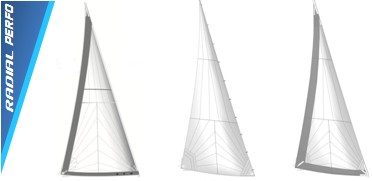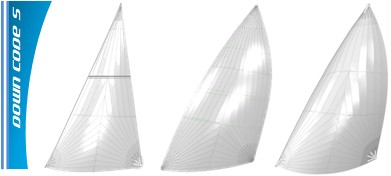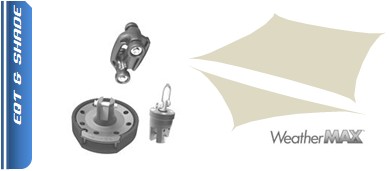No products
HOW TO MEASURE
FREE SUPPORT HERE !
Horizon gives you free support while you measure your sails !
Measuring your sails is easier than it sounds, thanks to our easy-to-understand Measurement Forms. Measuring for a new sail is something every sailor can do. It’s not only easy with our guidance, but it also gives you a chance to better understand your boat and improve your knowledge of sail trimming. Our team is here to make sail measurement simple and stress-free. So let’s get started. Please choose a fine, not too windy day to take your measurements. Take a halyard, a long tape measure and follow our Measurement Form guidance (download your form from this page and add any comments you may have). A reel type (surveyors) tape measure has a metal loop at the end, so you can tie or shackle it to the halyard. Always pull the tape measure tight. If you can, send us pictures of your boat's sail plan or designer's specifications. Our long experience tells us it is better to physically measure the boat and not rely totally on the manufacturers specifications. Rig sizes can vary even between the same make and size of sailboat. Measurements can also be altered as a result of re-rigging, or modification by a previous owner. Good tip: Remember to tie a line to the halyard along with the tape measure, in case your tape breaks, so you can retrieve the halyard.
HEADSAIL MAINSAIL FURLING MAINSAIL DOWNWIND SAILS FOUR-SIDED SAIL LATEEN SAIL
STACK PACK STACK PACK WITH AWNINGS MAINSAIL COVER HEADSAIL COVER COCKPIT AWNINGS SPRAY DODGERS BIMINI TOP CANVAS
We recommend measuring your rig before ordering a custom sail, to be sure it will fit properly. Production boat rigs will vary for a number of reasons; sailors may modify their rig, the manufacturer may have offered a number of rig options for the same make and model. Therefore, it is always better to measure yourself. We provide detailed instructions on how to measure your sails. The important things to know are what your maximum luff, foot and leech dimensions can be. Please, do not measure using a rope, as ropes stretch. When we ask for max hoist, we will deduct a suitable amount for stretch. A little short is fine, too long can give you lots of problems on the water, particularly in stronger winds. Instead of measuring the rig, another option might be to measure your old sails, but it’s better to measure the rig as your old sails may be blown out, or stretched and will not fit perfectly any more. Or the sail may not have been made to the best design for your boat. So please, measure the rig. For further information, or if you have questions about which type or cut of sail is best for you, please email us at info@h-sails.com We'll do our best to give you a quick answer.

MEASURING THE HEADSAIL
Clip the tape measure onto your headsail halyard, or to the upper furling swivel on a furler, just like the head of the sail. Hoist it until it stops fully at the top. Measure down to the tack fitting for "Lp". Make sure the tack shackle is pointing up, as it will do when the sail is set. "I" is the distance between the halyard or swivel shackle hoisted to max and the deck at mast level. "B" is the distance between the halyard or swivel shackle hoisted to max and the front end of sheet track. Measure the distance between the forestay pin and the mast foot for J. Measure the position of both ends of the sheeting track on deck, SA and SY, so we can design the perfect angle to the clew of your new sail. Please, note the height of the clew in case you need a high clew sail, for a less obstructed view ahead and to leeward. You also need to check the diameter of the luff tape (that slides into the groove in the aluminium luff foil), specify the colour of UV cover and whether it is to be placed on port or starboard side of the sail.
WATCH TUTORIAL How to Measure Your Headsail for a Perfect Fit | Complete Step-by-Step Video Guide
MEASURING THE MAINSAIL
Attach the tape measure to the main halyard and hoist to the maximum, or to the black band around the mast (if available). Measure to the main tack fitting for Lp/P. Ld/E is the length measured from the main tack fitting to the clew connection, or the black band around the boom (if available). Note the shape and size of the slides, slugs, or bolt rope and how they attach to the mast. Note foot details (loose-foot or rope foot), gooseneck and tack details. Also, check the distance from the aft end of the mast to the backstay, so we can determine the amount of roach that is possible.WATCH TUTORIAL How to Measure Your Mainsail for a Perfect Fit | Complete Step-by-Step Video Guide
MEASURING A DOWNWIND SAIL
Clip the tape measure onto your spinnaker halyard, just like the head of the sail. Hoist it until it stops fully at the top. Measure down to the tack fitting on the bowsprit (or pole end) for ‘Lpv’, to the deck and forestay intersection for ‘Lp’ and to the shroud u-bolt at deck level for ‘I’. Measure the horizontal distance between the deck and forestay intersection and the mast for ‘J’. Then measure the position of the sheet point ‘Sh’, so we can design the perfect angle to the clew of your new sail. For asymmetric spinnakers, please specify the length of the bowsprit and whether the vertical measurements were taken with or without the furler. For symmetrical spinnakers, note the length of the spinnaker pole.
MEASURING THE STACK PACK
Be careful to take the circumferences of the mainsail (A, B, C) without the boom. Dimensions L and M are essential. Please measure the circumference of the mast (M), including the halyards. It is also crucial to specify whether the mainsail is loose-footed or rope-footed (Y and X).
WATCH TUTORIAL How to Measure Your Stack Pack for a Perfect Fit | Complete Step-by-Step Video Guide
MEASURING THE MAINSAIL COVER
Be careful to take the circumferences of the mainsail (A, B, C) with the boom. Dimensions L and M are essential. Please measure the circumference of the mast (M), including the halyards.








